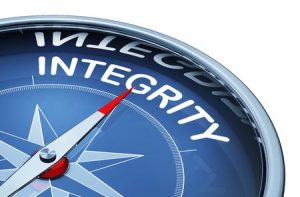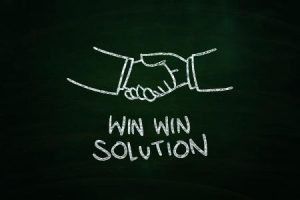Leading with Integrity
“When you sacrifice your integrity, you erode your most precious leadership possession. People will forget and forgive any judgment error that you make, but integrity mistakes are forever.”
David Cottrell, author of Listen Up Leader – Pay Attention, Improve and Guide
The first question most people ask themselves is: “Do I trust my boss and the other members of management?”
Trust is a by-product of integrity. Leaders are asked to be honest, respectful, responsible and credible. Without integrity, leadership rings hollow.








